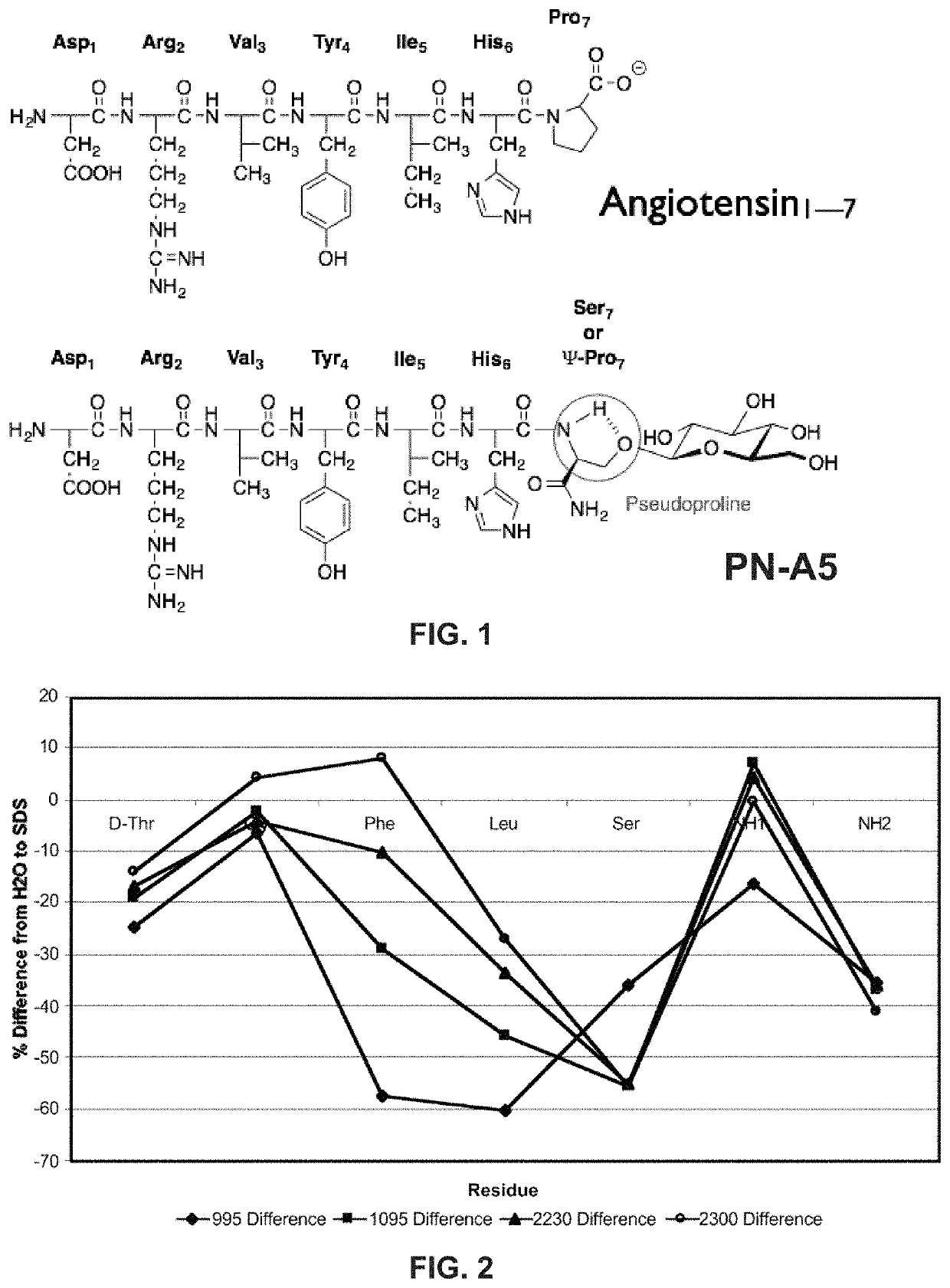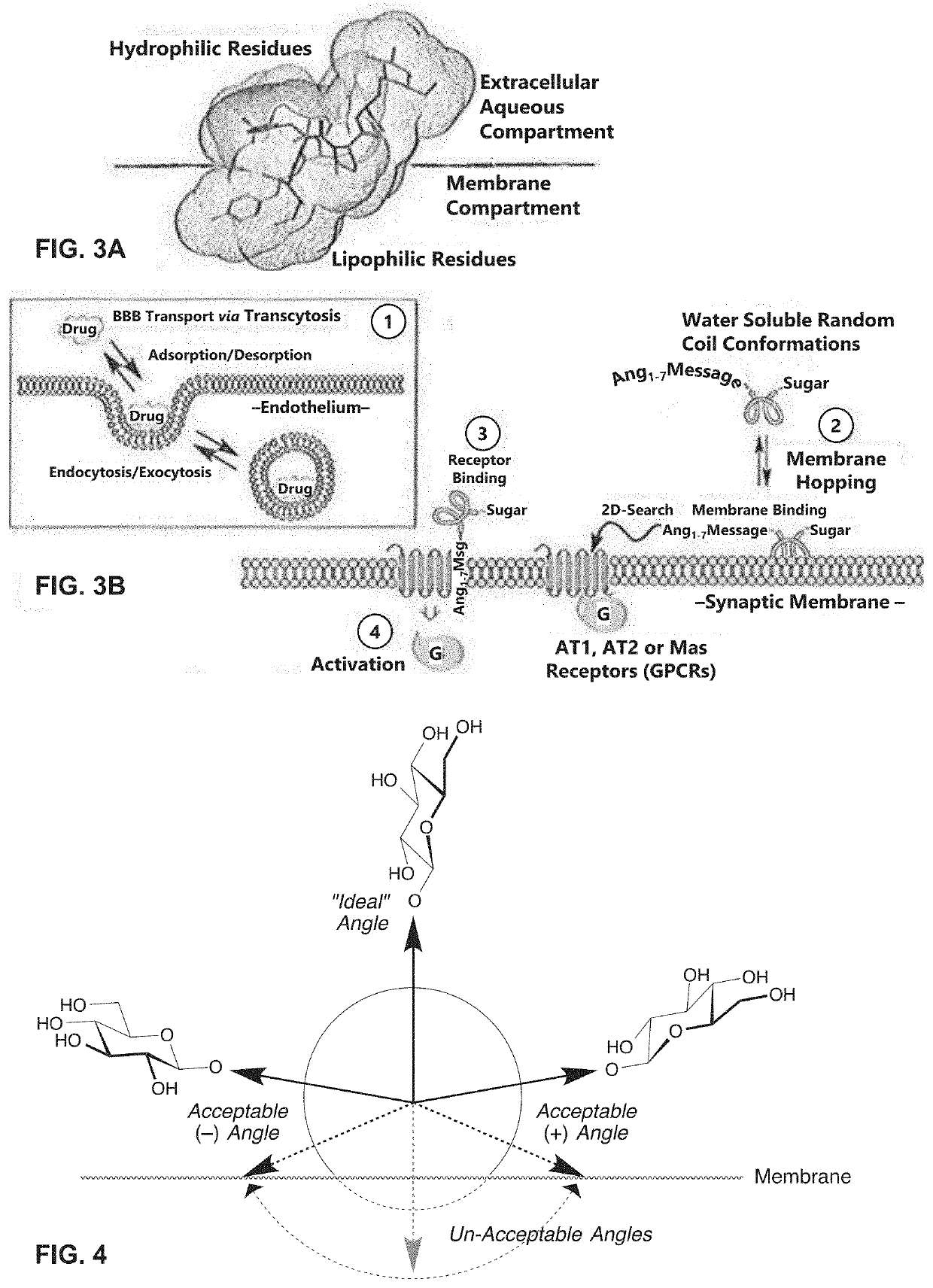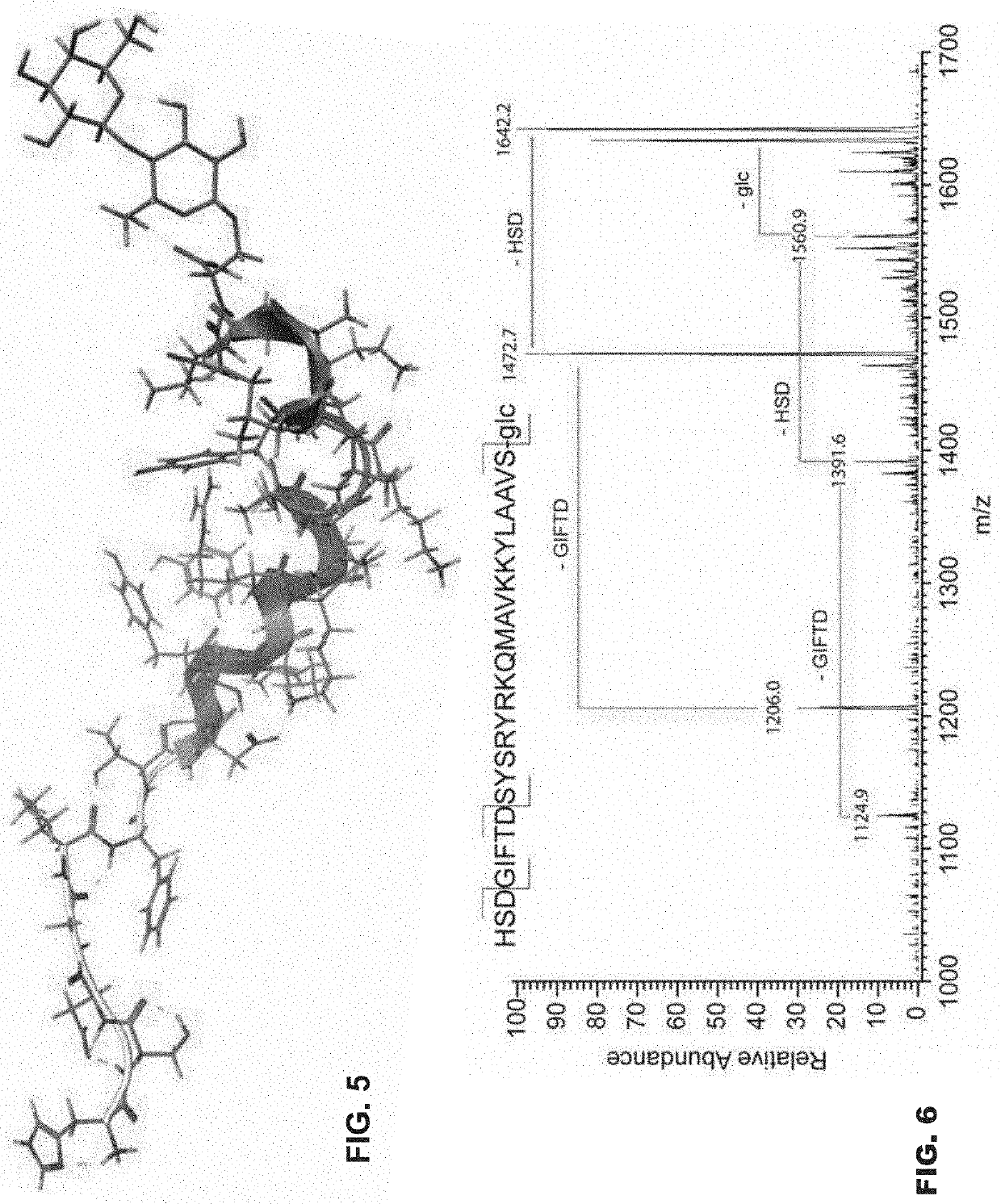Glycosylated peptides with pseudoproline residues and having enhanced half-lives and ability to cross the blood brain barrier
a glycosylation and peptide technology, applied in the field of peptides, can solve the problems of no cure, no halting disease progression, disappointing neurotrophic factor trials, etc., and achieve the effects of promoting passage across a hydrophobic barrier, and enhancing a peptide's half-li
- Summary
- Abstract
- Description
- Claims
- Application Information
AI Technical Summary
Benefits of technology
Problems solved by technology
Method used
Image
Examples
example 1
[0062]Example 1 describes the study of peptides and O-linked glycopeptides related to Pituitary Adenylate Cyclase Activating Peptide (PACAP) for their potential as agonist neuroprotective agents and antagonist anti-migraine agents. Briefly, activation of human PAC1 receptors expressed in Chinese Hamster Ovary (CHO) cells was observed for PACAP1-27, as well as its glucoside analogue (PACAP1-27-S-G) with similar potency and efficacy. The glucoside (PACAP1-27-S-G) showed enhanced stability in the presence of mouse serum, and its presence in mouse brain could be detected after i.p. administration by flow-injection tandem mass spectrometry (MS3). Both the glucoside and the lactoside derivatives promoted differentiation of pheochromocytoma cells (PC12 cells) grown in culture, suggesting endogenous PAC1 agonism. In addition glycosylated derivatives of PACAP6-27 were tested as potential PAC1 antagonists for the treatment of migraine. These compounds did not display antagonist activity, yet ...
example 2
[0097]Example 2 describes the study of glycosides and the Ang-(I-7) peptide. The present invention is not limited to the compounds, configurations, methods, and systems described in Example 2.
[0098]Glycosides are added to the aqueous face of the native Ang-(I-7) peptide at (sites on the aqueous surface and not the lipophilic surface). Inherent binding of the glycopeptide to the native receptor is minimally affected. Therefore, the glycosylated Ang-(I-7) derivatives can, at minimum, maintain Mas binding similar to that of the native Ang-(I-7) peptide. Non-limiting examples of Ang-(I-7) derivatives are shown in Table 3.
TABLE 3SEQID NO:Ang Peptides1234567813Native AT1-7AspArgValTyrIleHisProOH14ATn-1AspArgValTyrIleHisProNH215ATn-2AspArgValTyrIleHisProSer°NH216ATn-3AspArgValTyrIleHisProSer*NH217ATn-4AspArgValTyrIleHisProSer**NH218ATn-5AspArgValTyrIleHisSer*ATn-5-ATN11AlascanTyrIleetc . . .ProSer° / * / **NH219ATn-12 . . .AspArgXxxTyrYyyHisProSer° / * / **NH220ATn-XX . . .AspArgXxxZzzYyyHisProSer...
PUM
| Property | Measurement | Unit |
|---|---|---|
| angles | aaaaa | aaaaa |
| power | aaaaa | aaaaa |
| half life | aaaaa | aaaaa |
Abstract
Description
Claims
Application Information
 Login to View More
Login to View More - R&D
- Intellectual Property
- Life Sciences
- Materials
- Tech Scout
- Unparalleled Data Quality
- Higher Quality Content
- 60% Fewer Hallucinations
Browse by: Latest US Patents, China's latest patents, Technical Efficacy Thesaurus, Application Domain, Technology Topic, Popular Technical Reports.
© 2025 PatSnap. All rights reserved.Legal|Privacy policy|Modern Slavery Act Transparency Statement|Sitemap|About US| Contact US: help@patsnap.com



